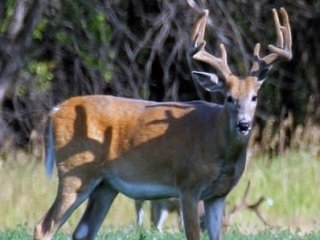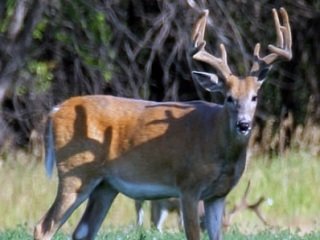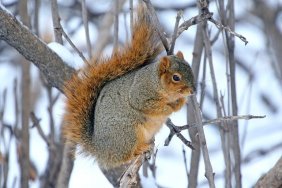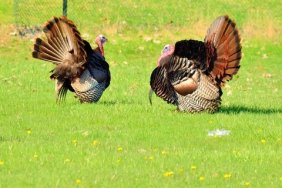 Any hunter who hopes to intercept a mature Whitetail buck in his own habitat needs to be in the right place at the right time. To be in that right place, you will either need occasional blind luck, or you will need to know where and when to ambush him. If you can find his favorite trail between his bedding area and his food source during early season, he will practically fill your tag for you.
Any hunter who hopes to intercept a mature Whitetail buck in his own habitat needs to be in the right place at the right time. To be in that right place, you will either need occasional blind luck, or you will need to know where and when to ambush him. If you can find his favorite trail between his bedding area and his food source during early season, he will practically fill your tag for you.
Patterning a mature buck can only take place during a short, specific time period long before the rut starts to motivate a buck’s habits. As a mature buck starts to think about losing his velvet, he is most likely bedding, feeding, and watering in the same locations every day. It is during this time that old velvet head is breaking away from any bachelor groups he might have been frequenting, but he is still just social enough to feed with other deer in the feeding zone.
If you are an early season bow hunter or if you have the chance to hunt early season with a muzzleloader or rifle, this is when you want to scout long distance to see where and when your target buck is entering a specific field or opening.
During the long days of late summer, the growing feed is reaching the last phases of nutrient gathering and for most crops and grasses, the end is near. It is during this time that deer tend to feed early in the evening which makes them conspicuous to human watchers.
One effective way to scout these early evening feed zones is with a spotting scope or a good pair of binoculars. By studying deer from a distance, you will be less likely to disturb them and more likely to find out where they are coming from and what trails they are favoring. Whether you choose a ground blind or a tree stand, you will want to be located near the buck’s entrance point and the trail that took him there. And, don’t forget about the wind.
I have an outfitter friend who utilizes this scouting tactic for his muzzleloader hunters and it is deadly and highly successful. As this magic time drags on, bucks will eventually begin to enter fields later and later. When this happens, an excellent adjustment is to set up inside the timber back a distance from your previous location so that you can get him earlier in the evening while he is on his way to the feeding zone.








